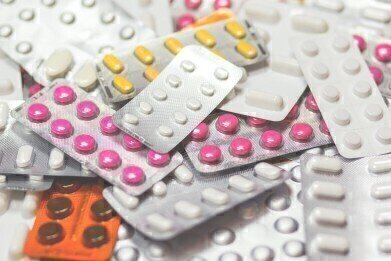Water/Wastewater
What Are the Different Types of Micropollutants?
Jun 13 2022
Micropollutant is the term used to refer to contaminants which are released into the natural environment in low concentrations as a by-product of household, industrial and natural processes. Despite their low levels at the point of entry into soil and water sources, many of them do not readily break down or biodegrade, meaning they can bioaccumulate over time.
This can cause grave consequences for plant, animal and even human life, since the presence of larger amounts of these micropollutants can have negative effects on the delicate balance of ecosystems and the internal workings of marine organisms. But what are the different types of micropollutants, and where do they come from? Generally speaking, they can be divided into the following broad categories:
Pharmaceuticals
Pharmaceuticals have become such an everyday part of our lives that we rarely give pause for thought when using them nowadays. From painkillers to relieve headaches to more advanced treatment plans to address more serious health concerns to even recreational drug use, pharmaceuticals are extremely prevalent in today’s society.
In fact, the average European consumes 48 packs of drugs every single year. Many of the substances contained in these pharmaceuticals are capable of passing through the human body without breaking down and making their way into our wastewater treatment systems, where they can again survive many of the most modern processes.
Agricultural additives
Pesticides, herbicides and insecticides have become an integral means of ensuring we have enough food to satisfy the world’s ballooning population. Unfortunately, the chemicals contained within these products can infiltrate surface and groundwater, causing an imbalance of nutrients in our rivers, streams, lakes, seas and oceans.
Depending on the chemical in question, this can promote the growth of certain organisms (such as algae) to the detriment of others (by consuming more than their fair of oxygen and blocking out sunlight). On the other hand, it can negatively impact other freshwater and marine organisms, playing havoc with their reproductive and nervous systems and inhibiting growth, development and functioning of tissues.
Cosmetics, PCPs, chemicals and heavy metals
Everyday items such as makeup, shampoo, skin creams and other personal care products (PCPs) may contain harmful micropollutants that are simply washed off our skin and hair and down the drain – but do not biodegrade thereafter. Similarly, other types of products such as paints, varnishes, flame retardants, UV protection substances and packaging materials can all contain micropollutants, as well.
On average, every million Europeans are responsible for discharging some 157 tonnes of dichloromethane, 17 tonnes of dichloroethane and 3.1 tonnes of polycyclic aromatic hydrocarbons (PAHs) into the environment, all of which can have damaging effects on their surroundings over the long term. And that’s even before we begin to investigate contamination of heavy metals such as chromium, zinc and lead in our water sources.
Digital Edition
IET 34.2 March 2024
April 2024
Gas Detection - Biogas batch fermentation system for laboratory use with automatic gas analysis in real time Water/Wastewater - Upcycling sensors for sustainable nature management - Prist...
View all digital editions
Events
Apr 30 2024 Melbourne, Australia
Apr 30 2024 Birmingham, UK
May 03 2024 Seoul, South Korea
May 05 2024 Seville, Spain
May 06 2024 Minneapolis, MN, USA


















